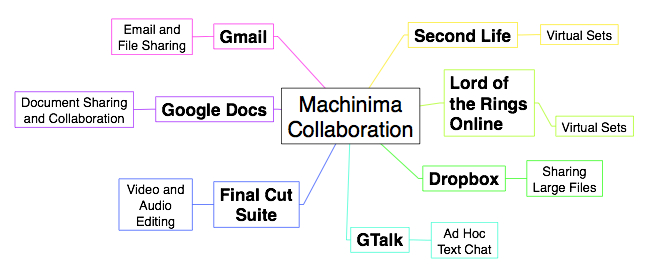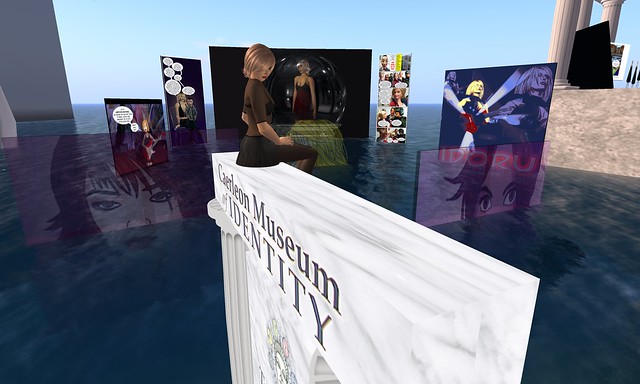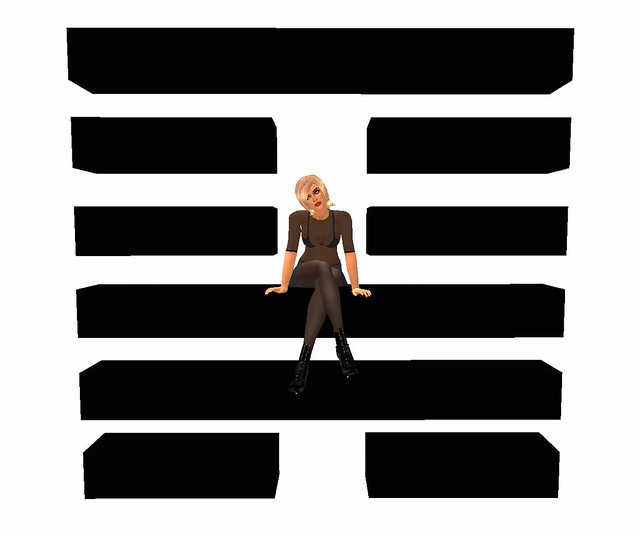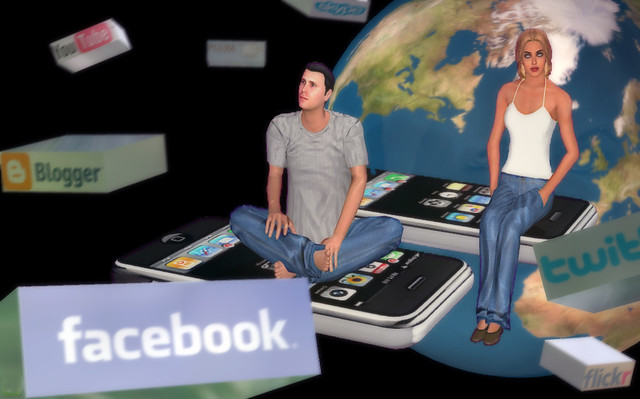After a year of development, The Caerleon Museum of Identity (formerly known as the Ambiguity of Identity Exhibition) will open this Saturday at 12:00 SLT, on
Caerleon Isle (
http://slurl.com/secondlife/Caerleon%20Isle/219/128/40).
On the following Saturday, October 9, there will be a performance of Gracie Kendal's theatre piece "VB15 - GRACIE / KRIS" at noon, with 16 live avatar models from Vaneeesa Blaylock/Company.
There will be a media preview for journalists and bloggers on Tuesday the 28th from 1:00-4:00 pm SLT.
I've included the full press release below, written by
FreeWee Ling. Here's a little video teaser I whipped up to give you a small taste of what's in store.
FOR IMMEDIATE RELEASE
The Caerleon Museum of Identity Debuts Saturday October 2 with Grand Opening Gala in Second Life
Collaborative Multi-Artist Exhibition Features Works of 18 Artists
The Caerleon Museum of Identity is the latest in the series of sim-wide collaborative installations by the Caerleon Artists Coalition, a project of the
Virtual Art Initiative. The show opens Saturday, 2 October at 12:00 PM (noon) on the
Caerleon Isle sim, (http://slurl.com/secondlife/Caerleon%20Isle/219/128/40). Additional entertainment (tba) will begin at 1:00. A media preview for journalists and bloggers will be held on Tuesday the 28th from 1:00-4:00 pm SLT.
On the following Saturday, October 9, there will be a performance of Gracie Kendal's theatre piece "VB15 - GRACIE / KRIS" at noon, with 16 live avatar models from Vaneeesa Blaylock/Company.
The Caerleon group was established by
Georg Janick (Dr. Gary Zabel of the University of Massachusetts, Boston) and consists of artists, writers, musicians, and scholars who are using the immersive and interactive digital media to develop new forms of artistic content. Members of the coalition are among t
he most respected and imaginative artists working in SL.
Georg Janick’s six
Theses on the Art of Virtual Worlds are the framework for the series of collaborations on the Caerleon sims. In addition to major builds on each of the six theses, there have been numerous theme collaborations on various topics, including consumerism, imprisonment, surrealism, and masks, as well as limited resource challenges like the one-prim and limited texture shows.
The Caerleon Museum of Identity is an interpretation by the collaborative team of Georg’s fourth thesis: the Ambiguity of Identity. It states in part, “…digital bodies, and the names that uniquely identify them, can be altered, multiplied, discarded, or exchanged at the will of the user. Since bodily presence is open to such radical discontinuity, the identity of the virtual person is protean and ambiguous, including indicators of age, gender, race, and even biological species.”
The project has been in development for over a year. Weekly discussions about the project inevitably centered around the subject of identity and how people in virtual worlds both express themselves and interact with others. This is a subject of tremendous interest to many in SL, and some of the team members have formed the open Creative Identity group to continue talking about issues, especially as they relate to creative work.
The early development of the museum metaphor and leadership for the project was the work of Sabrinaa Nightfire, who has run a number of the Caerleon theme collaborations. When Sabrinaa had to withdraw for personal reasons, it fell to FreeWee Ling to take over the coordination of the team and she has brought it finally to the opening with the tremendous support of all the artists. This is the first project of this magnitude FreeWee has done in SL. “It’s a very rare opportunity to work with so many creative people. This is why I’m in SL–to be creatively engaged and to be constantly inspired by talented colleagues. I am so grateful to Sabrinaa recommending my membership in the Caerleon group, for her inspiration on this project, and for her friendship. The Identity team dedicates this build to her with our love and best wishes.”
The 18 artists participating in this collaboration include:
- Artistide Despres
- Botgirl Questi
- Cat Bocaccio
- Chrome Underwood
- FreeWee Ling
- Fuscia Nightfire
- Gracie Kendal
- Ian Pahute
- L1aura Loire
- Lollito Larkham
- Maya Paris
- Nebulosus Severine
- Pete Jiminy
- Pixels Sideways
- RAG Randt
- Sabrinaa Nightfire
- Taralyn Gravois
- Wotthe Dickins
EVENTS:
SLURL:
http://slurl.com/secondlife/Caerleon%20Isle/219/128/40
OPENING: Saturday 2 October 2010, 12:00-2:00PM, and continuing through October.
DJ Mommaluv Skytower for opening party.
MEDIA PREVIEW: Tuesday 28 September, 1:00-4:00PM SLT
VB15 – GRACIE / KRIS in an encore performance, Saturday October 9 – Noon-1pm SLT. Gracie Kendal presents her theatre piece with 16 live avatar models from Vaneeesa Blaylock/Company. performance artists.
MACHINIMAS:
Ian Pahute:
http://www.youtube.com/watch?v=symG_03vh1Y
Botgirl Questi:
http://vimeo.com/15307758
RESOURCES:
NEW SL GROUP: CREATIVE IDENTITY A group for artists and others to discuss ideas about identity and creativity. This began from the discussions leading up to the Caerleon Artists Collective’s show on the topic of the Ambiguity of Identity, October 2010. We decided to continue the discussions beyond the show and to invite others to join us. Bring coffee and/or donuts. Or cake. But definitely coffee. And chocolate.
The Thesis by Georg Janick (Gary Zabel) (
Source) 4. Ambiguity of identity results from the fact that our bodily presence in the virtual world is mediated by a digital representation. All dwelling within a world involves being present in a body which both constitutes our perspective on things and makes us present to other embodied experiencers. Though personal identity can be a very complex construction, its ultimate foundation is continuity of bodily presence. However digital bodies, and the names that uniquely identify them, can be altered, multiplied, discarded, or exchanged at the will of the user. Since bodily presence is open to such radical discontinuity, the identity of the virtual person is protean and ambiguous, including indicators of age, gender, race, and even biological species.
CURRENT LIST OF PROJECT TITLES/DESCRIPTIONS (In progress)
Fuschia’s Flickr group We request that people post pictures from the exhibition here.













